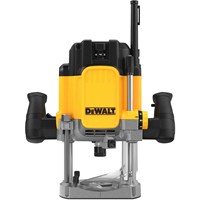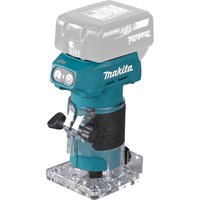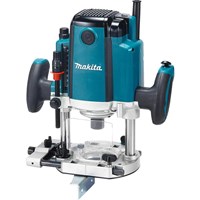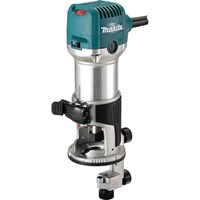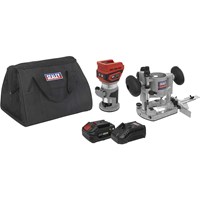Routers & Trimmers
Category
Related Categories
Filter Options
110v for Sites (13)
12v Battery (2)
18v Battery (40)
20v Battery (3)
240v Mains (23)
40v Battery (3)
DeWalt XR 18v (1)
Makita LXT (5)
Makita XGT (2)
Milwaukee M18 (3)
POWER FOR ALL (13)
Power X Change (15)
Yes (45)
Yes (26)
Yes (18)
Pay in 3 interest-free payments on purchases from £30-2000 with ![]() . Learn more.
. Learn more.
Einhell Professional TP-RO 18 Li BL 18v Cordless Brushless Plunge and Trim Router Set
5 types from £172.95
in stock
Einhell Professional TP-RO 18 Li BL 18v Cordless Brushless Plunge Router
5 types from £133.95
in stock
Einhell Professional TP-ET 18 Li BL 18v Cordless Brushless Trim Router
5 types from £100.95
in stock
Bosch ADVANCEDTRIMROUTER 18V-8 P4A 18v Cordless Trim Router with Plunge Attachment
6 types from £156.95
in stock
End of page 1 of 2... scroll down for more...
 Loading...
Loading...
End of content
Error - No more pages to load

Routers & Trimmers Information
A woodworking router essentially consists of a powerful motor which drives a collet (commonly either ¼” or ½”) into which a router cutter is inserted. Depending on the type of cutter, a router is able to accomplish a large number of tasks and it is generally considered one of the most versatile power tools for working on wood. Typical applications include carving out slots and grooves, chamfers, decorative edging and recesses for hinges or other hardware. Routers are often used with jigs, whereby they can accurately cut complex projects such as dovetail joints as well as numerous commonly required cuts for kitchen worktops, door hardware and general carpentry tasks. They can also be inverted for fixed position use in a router table, whereby material is fed into the cutter (much in the same manner as a table saw).Here's our Quick Application Guide:
• Laminate & Wood Trimmers – Originally developed for trimming laminates, these machines offer a compact and lighter duty alternative to plunge routers (without the plunge action) and are typically supplied with ¼” collets. They are not suitable for heavy duty applications or for use with larger cutters. All currently available cordless routers are found in this category.• Plunge Routers – On these machines the collet can be raised or lowered by an integrated plunge mechanism which confers some advantages over fixed base models, including the ability to drill into materials like a drill press. Generally classed as ¼” or ½” machines, the smaller ¼” variants are lighter and easier to control, while the ½” class is usually reserved for heavy duty applications like jointing kitchen worktops.




